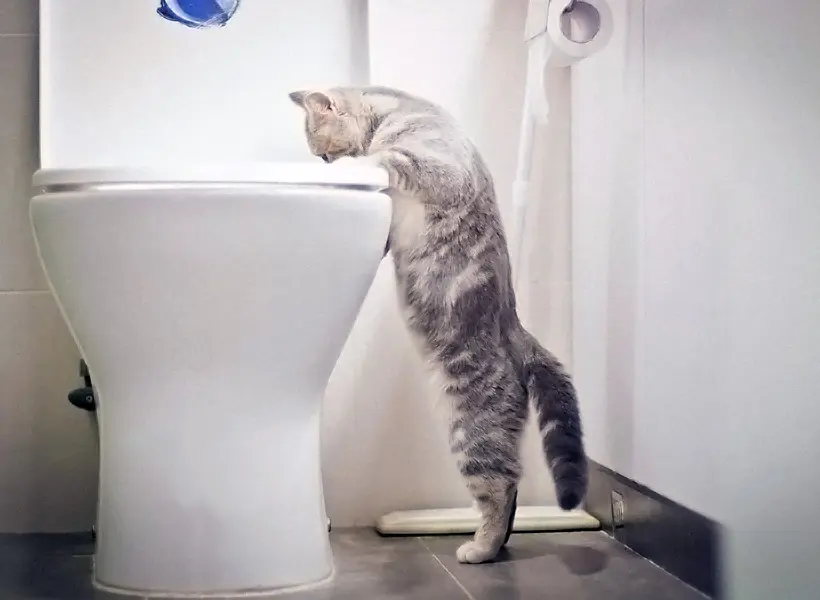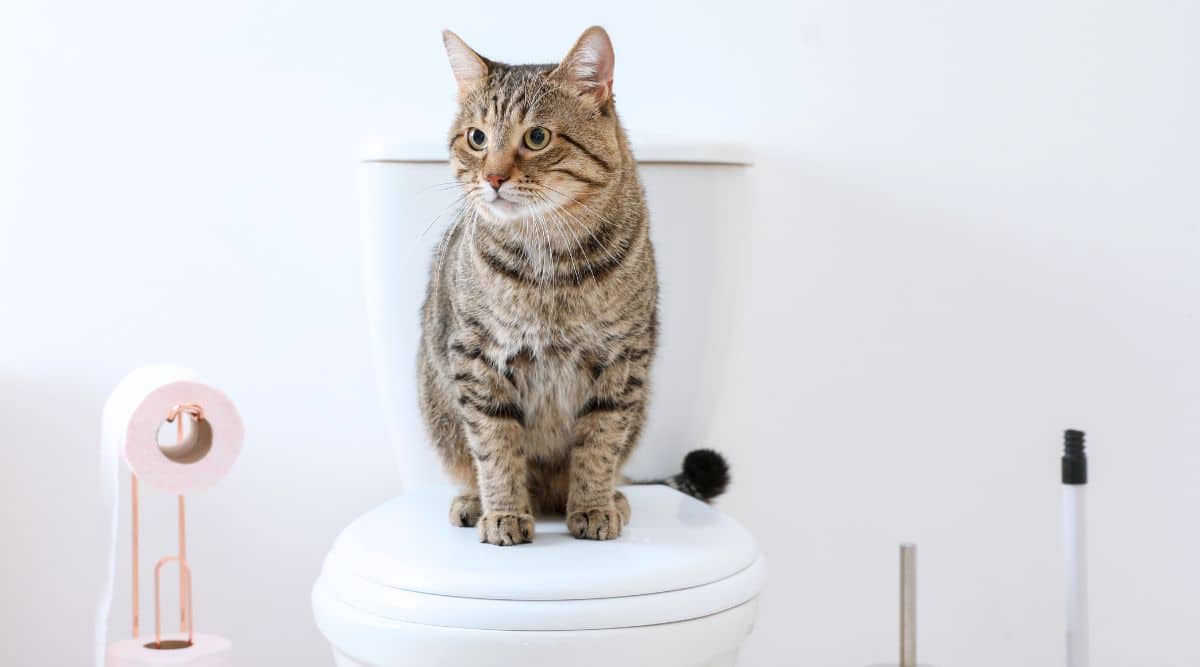We've noticed this article on Don't Flush Your Pets Poo Down The Loo, Vet Warns down the page on the web and thought it made good sense to share it with you in this article.

When it concerns taking care of waste, specifically animal waste, many people often resort to the convenient option of flushing it down the bathroom. However, this relatively simple service can have serious repercussions for the setting and public health. In this write-up, we'll explore why flushing pet waste down the commode is a bad idea and provide different methods for proper disposal.
Introduction
Correct waste disposal is crucial for keeping environmental sustainability and public health. While it might seem safe to purge animal waste down the bathroom, it can result in various problems, both for the setting and human health.
Dangers of flushing pet waste
Environmental impact
Flushing animal waste introduces dangerous bacteria and virus into rivers, which can negatively affect water communities. These virus can contaminate water resources and harm aquatic life, interrupting fragile environments.
Public health concerns
Animal waste contains damaging germs such as E. coli and Salmonella, which can present severe wellness threats to humans. Flushing animal waste down the bathroom can infect water products, resulting in the spread of diseases and infections.
Alternatives to flushing
Rather than flushing animal waste down the commode, there are a number of different disposal methods that are a lot more environmentally friendly and hygienic.
Composting
Composting pet waste is an environment-friendly way to get rid of it. By composting, raw material is broken down right into nutrient-rich soil, which can be utilized to feed yards and plants.
Landfill disposal
Disposing of animal waste in a landfill is an additional choice. While not as environmentally friendly as composting, it is a much safer alternative to flushing, as it stops the contamination of water sources.
Animal waste disposal systems
There are customized family pet waste disposal systems available that safely and hygienically get rid of pet waste. These systems commonly use enzymes to break down waste and get rid of smells.
Actions to proper animal waste disposal
To make certain proper disposal of animal waste, comply with these steps:
Scooping and getting waste
Regularly scoop and bag animal waste making use of eco-friendly bags. This prevents waste from infecting the atmosphere.
Utilizing designated waste bins
Dispose of bagged pet waste in assigned waste bins, such as compost bins or garbage dump containers. Prevent flushing it down the toilet whatsoever prices.
Cleaning can and animal locations consistently
Regularly clean litter boxes and animal areas to prevent the build-up of waste and microorganisms. Usage pet-safe cleaning items to preserve hygiene.
Advantages of appropriate disposal techniques
Taking on proper disposal approaches for animal waste provides numerous advantages:
Minimized environmental pollution
Proper disposal methods lower the danger of environmental pollution, protecting rivers and environments from contamination
Decreased danger of water contamination.
By avoiding flushing pet waste down the bathroom, the risk of water contamination is considerably decreased, guarding public health.
Boosted hygiene and hygiene
Appropriate disposal techniques promote far better sanitation and health, producing a safer environment for both human beings and pets.
Final thought
To conclude, flushing animal waste down the bathroom is unsafe to the setting and public health. By taking on alternate disposal approaches and complying with correct waste monitoring methods, we can minimize the unfavorable effect of animal waste and contribute to a cleaner, healthier planet.
What To Do With Dog Poo – The Do's And Don'ts Of Disposing Of Faeces
Dog poo bins
Some councils provide dedicated dog waste bins in popular dog-walking areas that can take dog poo that has been bagged but you can legally dispose of dog waste in any public litter bin, as long as it is securely bagged. This also applies to your wheelie bin at home.
Do not flush
Water companies do not recommend flushing dog faeces down the toilet because certain parasites can survive the water processing treatment and are potentially harmful to humans. You should also never consider flushing dog poo that has been bagged down the toilet as the bags will not break down and instead create severe blockages in the sewage system.
In the woods
The Forestry Commission promotes a ‘stick and flick’ method for dealing with waste in the woods. This means finding a stick and using it to flick any poo from off the path so that it is out of the way of other walkers. You could also bury it as long as it is not in an area where there might be livestock.
Livestock
Parasites found in dog poo can be transmitted to livestock if they inadvertently eat infected faeces that has been left on grazing land. This could result in the death of sheep or abortion in cattle so you should always make sure you pick up your dog’s waste in fields where livestock could be present.

Regularly clean litter boxes and animal areas to prevent the build-up of waste and microorganisms. Usage pet-safe cleaning items to preserve hygiene.
Advantages of appropriate disposal techniques
Taking on proper disposal approaches for animal waste provides numerous advantages:
Minimized environmental pollution
Proper disposal methods lower the danger of environmental pollution, protecting rivers and environments from contamination
Decreased danger of water contamination.
By avoiding flushing pet waste down the bathroom, the risk of water contamination is considerably decreased, guarding public health.
Boosted hygiene and hygiene
Appropriate disposal techniques promote far better sanitation and health, producing a safer environment for both human beings and pets.
Final thought
To conclude, flushing animal waste down the bathroom is unsafe to the setting and public health. By taking on alternate disposal approaches and complying with correct waste monitoring methods, we can minimize the unfavorable effect of animal waste and contribute to a cleaner, healthier planet.
What To Do With Dog Poo – The Do's And Don'ts Of Disposing Of Faeces
Dog poo bins
Some councils provide dedicated dog waste bins in popular dog-walking areas that can take dog poo that has been bagged but you can legally dispose of dog waste in any public litter bin, as long as it is securely bagged. This also applies to your wheelie bin at home.
Do not flush
Water companies do not recommend flushing dog faeces down the toilet because certain parasites can survive the water processing treatment and are potentially harmful to humans. You should also never consider flushing dog poo that has been bagged down the toilet as the bags will not break down and instead create severe blockages in the sewage system.
In the woods
The Forestry Commission promotes a ‘stick and flick’ method for dealing with waste in the woods. This means finding a stick and using it to flick any poo from off the path so that it is out of the way of other walkers. You could also bury it as long as it is not in an area where there might be livestock.
Livestock
Parasites found in dog poo can be transmitted to livestock if they inadvertently eat infected faeces that has been left on grazing land. This could result in the death of sheep or abortion in cattle so you should always make sure you pick up your dog’s waste in fields where livestock could be present.

As a devoted reader on Can You Flush Dog and Cat Poo Down the Toilet?, I assumed sharing that piece of content was sensible. Are you aware of another individual who is in to ? Why not promote it. Many thanks for your time. Return soon.
Schedule Appointment